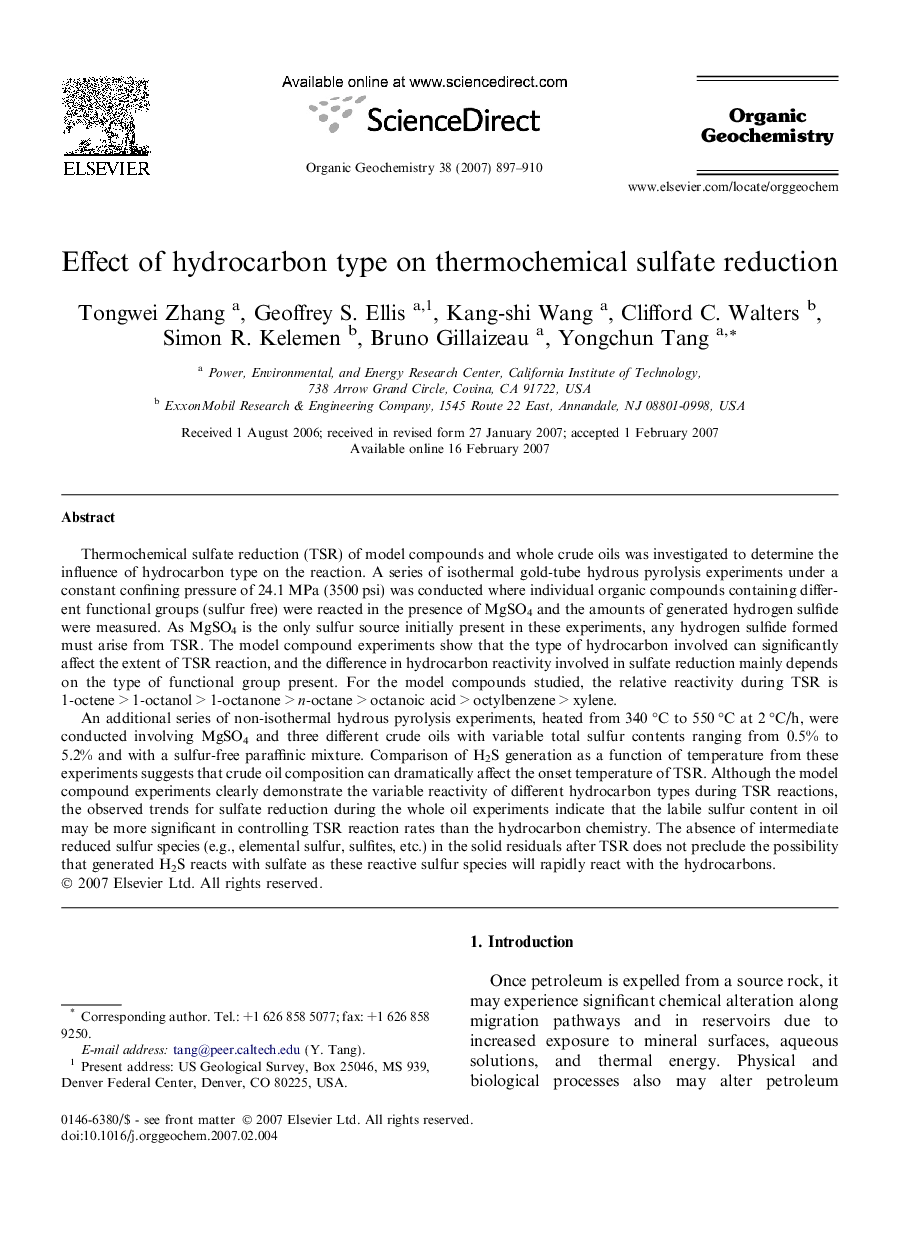| Article ID | Journal | Published Year | Pages | File Type |
|---|---|---|---|---|
| 5162094 | Organic Geochemistry | 2007 | 14 Pages |
Abstract
An additional series of non-isothermal hydrous pyrolysis experiments, heated from 340 °C to 550 °C at 2 °C/h, were conducted involving MgSO4 and three different crude oils with variable total sulfur contents ranging from 0.5% to 5.2% and with a sulfur-free paraffinic mixture. Comparison of H2S generation as a function of temperature from these experiments suggests that crude oil composition can dramatically affect the onset temperature of TSR. Although the model compound experiments clearly demonstrate the variable reactivity of different hydrocarbon types during TSR reactions, the observed trends for sulfate reduction during the whole oil experiments indicate that the labile sulfur content in oil may be more significant in controlling TSR reaction rates than the hydrocarbon chemistry. The absence of intermediate reduced sulfur species (e.g., elemental sulfur, sulfites, etc.) in the solid residuals after TSR does not preclude the possibility that generated H2S reacts with sulfate as these reactive sulfur species will rapidly react with the hydrocarbons.
Related Topics
Physical Sciences and Engineering
Chemistry
Organic Chemistry
Authors
Tongwei Zhang, Geoffrey S. Ellis, Kang-shi Wang, Clifford C. Walters, Simon R. Kelemen, Bruno Gillaizeau, Yongchun Tang,
